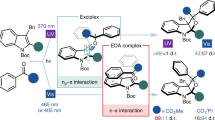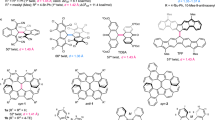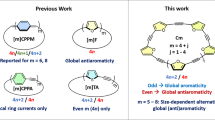Abstract
1. THE development of absorption bands in organic compounds is generally recognised as being due to the chromophoric properties of certain unsaturated groups, the electrons of which have a lower “absorption-frequency” (compare Darwin, “A Quantum Theory of Optical Dispersion”, Proc. Amer. Nat. Acad. Sci., 1923, 9. 25) than those of saturated groups. Modern physical theory also suggests that optical activity depends on the specific influence of a limited number of asymmetrically-disposed electrons (see, for example, Born, Physikal. Zeitschr., 1915, 16. 251–258; Ann. Physik., 1918, (iv.), 55. 177–240). Apart from the optically active co-ordination-compounds of Werner, the chromophoric groups are usually quite distinct from the asymmetric centres; but recent work on rotatory dispersion has shown that they may nevertheless be linked together very intimately, since the dispersion-equations are often dominated by the absorption-frequencies of the chromophoric groups. These frequencies are usually in the ultra-violet region of the spectrum; but, if they fall within the visible region, the well-known Cotton effect can often be observed when the measurements of optical rotatory power are carried through the part of the spectrum which includes the absorption-band.
This is a preview of subscription content, access via your institution
Access options
Subscribe to this journal
Receive 51 print issues and online access
$199.00 per year
only $3.90 per issue
Buy this article
- Purchase on Springer Link
- Instant access to full article PDF
Prices may be subject to local taxes which are calculated during checkout
Similar content being viewed by others

Rights and permissions
About this article
Cite this article
LOWRY, T., WALKER, E. Induced Asymmetry of Unsaturated Radicals in Optically Active Compounds. Nature 113, 565–566 (1924). https://doi.org/10.1038/113565a0
Issue Date:
DOI: https://doi.org/10.1038/113565a0
This article is cited by
Comments
By submitting a comment you agree to abide by our Terms and Community Guidelines. If you find something abusive or that does not comply with our terms or guidelines please flag it as inappropriate.


